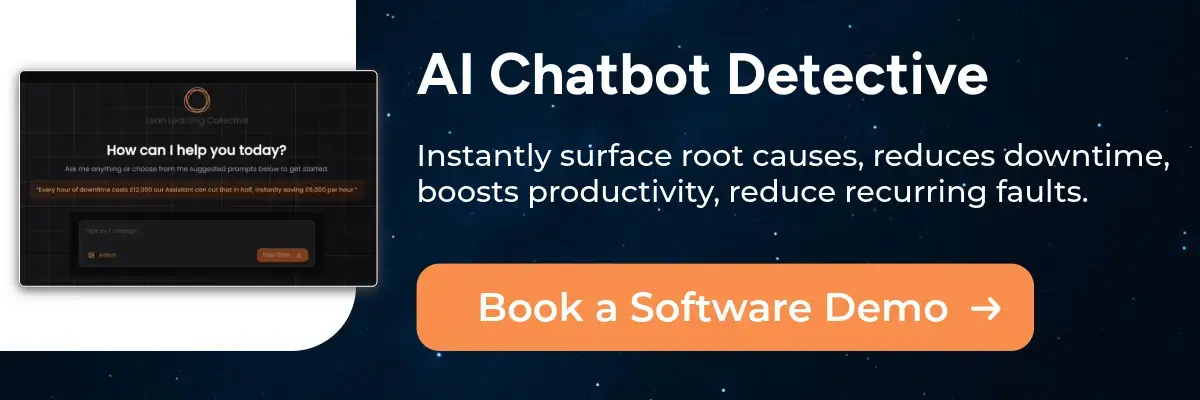In manufacturing, the difference between a bold idea and a sustainable transformation often comes down to people. You can have the most advanced strategy, tooling, or data, but without genuine buy-in from operators, technicians, and frontline supervisors, change won’t stick.
Too many lean or digital initiatives bog down because floor teams feel unheard, misaligned, or unconvinced. At Lean Learning Collective (LLC), we’ve helped manufacturers shift that narrative. The real competitive lead comes when leadership vision and shop-floor reality align.
Below, we’ll diagnose why buy-in gaps occur, share a transformation narrative (grounded in verifiable case results), and show how LLC’s human + AI approach turns scepticism into growth, backed by external evidence from recent published sources.

Why Resistance Arises (And How to Meet It)
Resistance is rarely irrational; it’s usually a calculated response to poor outcomes in past initiatives, unclear benefit, or lack of agency. Research and real-world practice point to three common barriers:
- Lack of Trust
When past efforts have come with broken promises, opaque communication, or little involvement, staff grow wary. Transparency and shared decision-making are essential to reverse that.
Evidence example: A UK case of optimising changeovers in a food manufacturing facility employed SMED methods and reported a ~30% drop in changeover time and a ~10% cut in labour costs, but only after frontline teams owned the process. ResearchGate - Fear of Disruption
Even beneficial changes feel risky if phrased poorly. If teams don’t see how their day improves, less firefighting, clearer workflows, fewer handoffs — their default is resistance. - “Another Fad” Syndrome
Many manufacturers have seen initiatives flare up and fade. Without consistent, visible results, buy-in evaporates.
Regional support: The 2024 Manufacturing Benchmarks Report (Australia) shows manufacturers are under increasing pressure to deliver continuous improvements or risk falling behind. grantthornton.com.au
If staff can’t see or feel improvement within weeks, the idea rarely survives.
Case Narrative: From Doubt to Ownership
Here’s a refined, evidence-anchored version of a transformation story, one built around trust, proof, and scale.
Starting Point: Low Morale, Low Ownership
A mid-sized precision component manufacturer (in the UK) had attempted lean before, consultants brought in, training rolled out, yet nothing “stuck.” Productivity lagged, morale was low, and the shop floor had learned to ignore new programs.
The Pivot Strategy
Step 1: Begin With Listening in a Pilot Cell
Rather than a full rollout, a lean pilot was launched in a troubled cell. Short gemba walks allowed operators to map friction points themselves. All suggestions were captured publicly, not filtered through management first.
Step 2: Deliver Micro-Wins
Instead of chasing a perfect system, improvements were small, visible, and fast:
- A colour-coding system cut tool changeover time by ~15–20%
- Automating redundant paperwork freed up operator time
- A live visual dashboard showed daily progress
Each win was celebrated, reinforcing that “lean” was theirs, not imposed.
Step 3: Peer-Driven Scaling
As results came in, other teams visited, asked to replicate changes, and momentum grew bottom-up. Within three months, the pilot cell outperformed targets, scrap reduced, and engagement climbed.
This kind of bottom-driven success is exactly what the 2024 World Manufacturing Report calls for, resilience built on participation, not top-down mandates. World Manufacturing Foundation
How LLC Embeds That Approach
At LLC, we don’t deliver generic systems and walk away. We guide your team from pilot to scale, combining lean thinking with enabling AI, always with ROI and ownership at the core. LLC Case Study.
Here’s how we do it:
1. Make Data Visible, Not Complex
Many factories have data buried in systems few see. We integrate with existing ERP/MES to surface real-time, actionable metrics (cycle time, drift, throughput) in clarity dashboards. This transparency turns data into shared problems that teams can solve.
2. Automate Routine Tasks
We build micro-automations for repetitive admin (downtime logs, QA checks, shift reports). Skilled staff then get capacity back for problem-solving and continuous improvement.
3. Embed Human + AI Learning Tools
Digital standard work modules, guided instructions, and knowledge capture keep critical know how in the team. This is especially vital in a climate of skills gaps and labour turnover.
4. Validate Early, Scale with Proof
We target pilots that deliver visible ROI within 4–12 weeks. Once operators see throughput gains or fewer defects, buy-in becomes a self-reinforcing movement, not a mandate.

Leadership Playbook: From Scepticism to Strategy
Even seasoned leadership teams can underestimate the emotional component of change. These five steps help you build belief from the ground up:
- Ask First, Then Announce — Run small listening sessions. Ask: “If one thing changed today, what would help you?”
- Fix One Visible Bottleneck — Solve it transparently.
- Recognise Real Contributors — Celebrate frontline ideas in meetings, newsletters, floorboards.
- Choose Tools That Enable, Not Replace — Technology should augment people, not alienate them.
- Show Progress Publicly — Use daily metrics, boards, and dashboards to make wins part of the rhythm.
The shift from scepticism to ownership occurs when people see that change truly makes their day easier.
The Bottom Line: Growth Through People + Smart Systems
When lean meets human insight and enabling technology, the result is more than operational efficiency, it’s empowerment.
At Lean Learning Collective, we partner with manufacturing SMEs in the UK, Australia, and New Zealand to build fast, operate lean, automate to win. We design change so it’s visible, measurable, and human-centred.
When you're ready to turn hesitation into high performance, let’s connect.

Oct 7, 2025 3:34:13 PM

